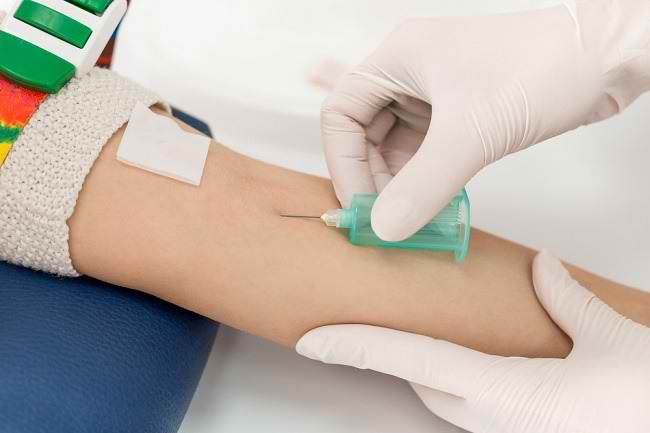Adrenergic blockers are a group of drugs consisting of alpha blockers and beta blockers. This drug is often used to treat high blood pressure, heart disease, or chest pain. In addition, alpha blockers are also used to handle enlargement of the prostate gland.
Alpha blockers work by inhibiting the work of the hormone norepinephrine, so that smooth muscles, such as blood vessel muscles, become weak and blood pressure drops and blood flow becomes smoother. This muscle-relaxing effect can also be used to relieve complaints due to an enlarged prostate gland.

Beta blockers work by blocking the hormone epinephrine (adrenaline). Thus, the heart beats more slowly and blood pressure decreases. In addition to treating hypertension, beta blockers may also be used to treat the following conditions:
- angina
- Heart failure
- Anxiety disorders
- Heart rhythm disturbances (arrhythmias)
- Glaucoma
- Certain types of tremors
- Hyperthyroidism
- Migraine
Precautions Before Using Adrenergic Blockers
Adrenergic blockers should not be used carelessly. There are several things you should pay attention to before using this drug, including:
- Do not use this medication if you are allergic to adrenergic blockers. Tell your doctor about any allergies you have.
- Tell your doctor if you have or have ever had prostate cancer, gastrointestinal obstruction, constipation, kidney disease, liver disease, diabetes, Raynaud's syndrome, high cholesterol, asthma, heart failure, or heart rhythm disorders, including bradycardia.
- Tell your doctor if you are pregnant, breastfeeding, or planning a pregnancy.
- Tell your doctor if you are taking certain medications, supplements, or herbal products.
- See your doctor right away if you have an allergic drug reaction, serious side effect, or overdose after using adrenergic blockers.
Adrenergic Blocker Side Effects and Dangers
Side effects that can occur after the use of adrenergic blocking drugs depend on the type of drug. However, in general, there are some side effects that can occur after using adrenergic blockers, namely:
- Drowsiness, headache, or dizziness
- Heart palpitations or slow heart rate
- Sexual dysfunction
- Cold hands and feet
- Unusual tiredness or depression
- Sleep disturbances, including nightmares
Consult a doctor if these side effects do not improve or get worse. See a doctor immediately if you have an allergic reaction to the drug, which can be characterized by certain symptoms, such as shortness of breath, skin rash, or swelling of the lips, tongue, or face.
Types and Trademarks of Adrenergic Blockers
The following are the types of drugs that are included in the adrenergic blocking drug group along with the trademarks and dosages based on the condition and age of the patient:
1. Alpha blockers
Alpha blockers are generally combined with diuretic drugs to treat high blood pressure. In addition, this drug is also used to treat difficulty urinating due to an enlarged prostate gland.
This drug can sometimes also be used to treat kidney stones. Examples of alpha-blocking drugs are:
Tamsulosin
Trademarks: Duodart, Harnal D, Harnal Ocas, Prostam SR, Tamsulosin Hydrochloride
To find out the dosage and more information about this drug, please visit the tamsulosin drug page.
Alfuzosin
Trademark: Xatral XL
The following is a dose of alfuzosin to treat swelling of the prostate gland (Benign prostatic hyperplasia) based on the patient's age:
- Mature: Dosage 2.5 mg, 3 times a day. The maximum dose is 10 mg per day. The first dose should be given at bedtime.
- seniors: Dosage 2.5 mg, 2 times a day. The duration of treatment is 3-4 days.
Doxazosin
Doxazosin trademarks: Cardura, Doxazosin Mesilate, Tensidox, Tensidox-2
The following is the dose of doxazosin for adults based on the condition to be treated:
- Condition: High blood pressure
The initial dose is 1 mg before bedtime, the dose can be doubled after 1-2 weeks according to the patient's body response. Maintenance dose 1-4 mg once daily. The maximum dose is 16 mg per day.
- Condition: Swelling of the prostate gland
The initial dose is 1 mg before bedtime, the dose can be doubled after 1-2 weeks according to the patient's body response. Maintenance dose 2–4 mg, once daily. The maximum dose is 8 mg per day.
Indoramin
Trademark: -
The following is the dose of indoramin for adults based on the condition to be treated:
- Condition: High blood pressure
The initial dose is 25 mg, 2 times a day. The dose may be increased by 25–50 mg, divided into 2–3 doses, after 2 weeks of treatment. The maximum dose is 200 mg per day.
- Condition: Swelling of the prostate gland
The initial dose is 20 mg, 2 times a day. The dose may be increased by 20 mg after 2 weeks of treatment. The maximum dose is 100 mg per day.
Prazosin
Prazosin trademark:-
The following is the dose of prazosin for adults based on the condition to be treated:
- Condition: High blood pressure
Initial dose 500 mcg, 2-3 times daily, for 3-7 days. The dose may be increased up to 1 mg, 2 times a day for the next 3–7 days, according to the needs and response of the patient's body. The maximum dose is 20 mg per day.
- Condition: Swelling of the prostate gland and Raynaud's syndrome
Initial dose 500 mcg, 2–4 times daily. The dose can be increased according to the needs and response of the patient's body. The maximum maintenance dose is 2 mg, 2 times a day.
- Condition: Heart failure
Initial dose 500 mcg, 2-3 times daily, for 3-7 days. The dose may be increased to 1 mg 2-3 times a day for the next 3-7 days, according to the needs and response of the patient's body. The maximum dose is 20 mg per day.
Terazosin
Terazosin trademarks: Hytrin, Hytroz, Terazosin HCL
The following is the dose of doxazosin for adults based on the condition to be treated:
- Condition: High blood pressure
The initial dose is 1 mg before bedtime, the dose can be gradually doubled every week according to the patient's body response. Maintenance dose 2–10 mg, once daily. The maximum dose is 20 mg per day.
- Condition: Swelling of the prostate gland
The initial dose is 1 mg before bedtime, the dose can be gradually doubled every week according to the patient's body response. Maintenance dose 5–10 mg, once daily.
2. Beta Blockers
Beta blockers are used to treat various diseases, such as arrhythmias, heart failure, angina, migraines, and tremors. Some examples of beta blockers are:
Atenolol
Trademarks: Atenolol, Betablok, Farnormin 50, Internolol 50, Niften, Lotenac, Lotensi
To find out the dosage and more information about this drug, please visit the atenolol drug page.
Bisoprolol
Trademarks: Beta-One, Bipro, Biofin, Biscor, Bisoprolol Fumarate, Bisovell, Carbisol, Concor, Hapsen, Lodoz, Maintate, Miniten, Opiprol, Selbix
To find out the dosage and more information about this drug, please visit the bisoprolol drug page.
Carvedilol
Trademarks: Blorec, Bloved, Cardilos, Carvedilol, Carivalan, Carvilol, V-Bloc
To find out the dosage and more information about this drug, please visit the carvedilol drug page.
Metoprolol
Trademarks: Fapressor, Loprolol, Lopressor
To find out the dosage and more information about this drug, please visit the metoprolol drug page.
Propranolol
Trademarks: Farmadral, Liblok, Propranolol, Propranolol Hcl
To find out the dosage and more information about this drug, please visit the propranolol drug page.
Timolol
Trademarks: Azarga, Cosopt, Duotrav, Glaoplus, Isotic Adretor, Opthil, Tim-Ophtal, Timo-Comod, Timol, Xalaxom, Ximex Opticom
To find out the dosage and more information about this drug, please visit the timolol drug page.









